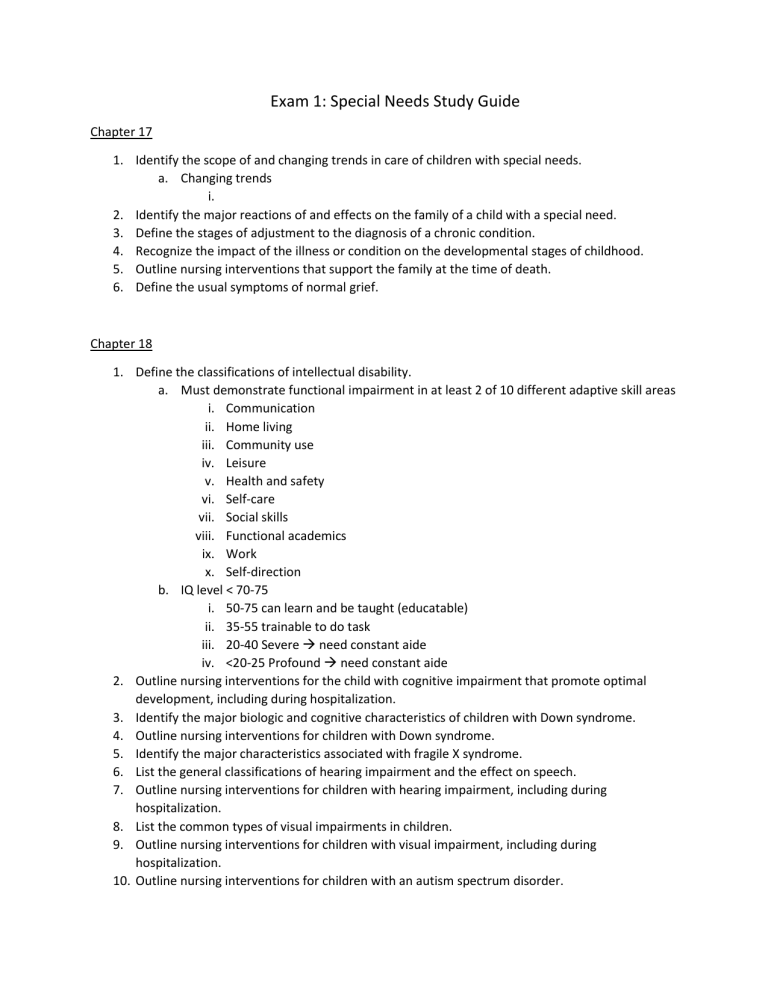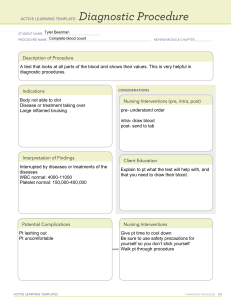
Exam 1: Special Needs Study Guide Chapter 17 1. Identify the scope of and changing trends in care of children with special needs. a. Changing trends i. 2. Identify the major reactions of and effects on the family of a child with a special need. 3. Define the stages of adjustment to the diagnosis of a chronic condition. 4. Recognize the impact of the illness or condition on the developmental stages of childhood. 5. Outline nursing interventions that support the family at the time of death. 6. Define the usual symptoms of normal grief. Chapter 18 1. Define the classifications of intellectual disability. a. Must demonstrate functional impairment in at least 2 of 10 different adaptive skill areas i. Communication ii. Home living iii. Community use iv. Leisure v. Health and safety vi. Self-care vii. Social skills viii. Functional academics ix. Work x. Self-direction b. IQ level < 70-75 i. 50-75 can learn and be taught (educatable) ii. 35-55 trainable to do task iii. 20-40 Severe need constant aide iv. <20-25 Profound need constant aide 2. Outline nursing interventions for the child with cognitive impairment that promote optimal development, including during hospitalization. 3. Identify the major biologic and cognitive characteristics of children with Down syndrome. 4. Outline nursing interventions for children with Down syndrome. 5. Identify the major characteristics associated with fragile X syndrome. 6. List the general classifications of hearing impairment and the effect on speech. 7. Outline nursing interventions for children with hearing impairment, including during hospitalization. 8. List the common types of visual impairments in children. 9. Outline nursing interventions for children with visual impairment, including during hospitalization. 10. Outline nursing interventions for children with an autism spectrum disorder.

